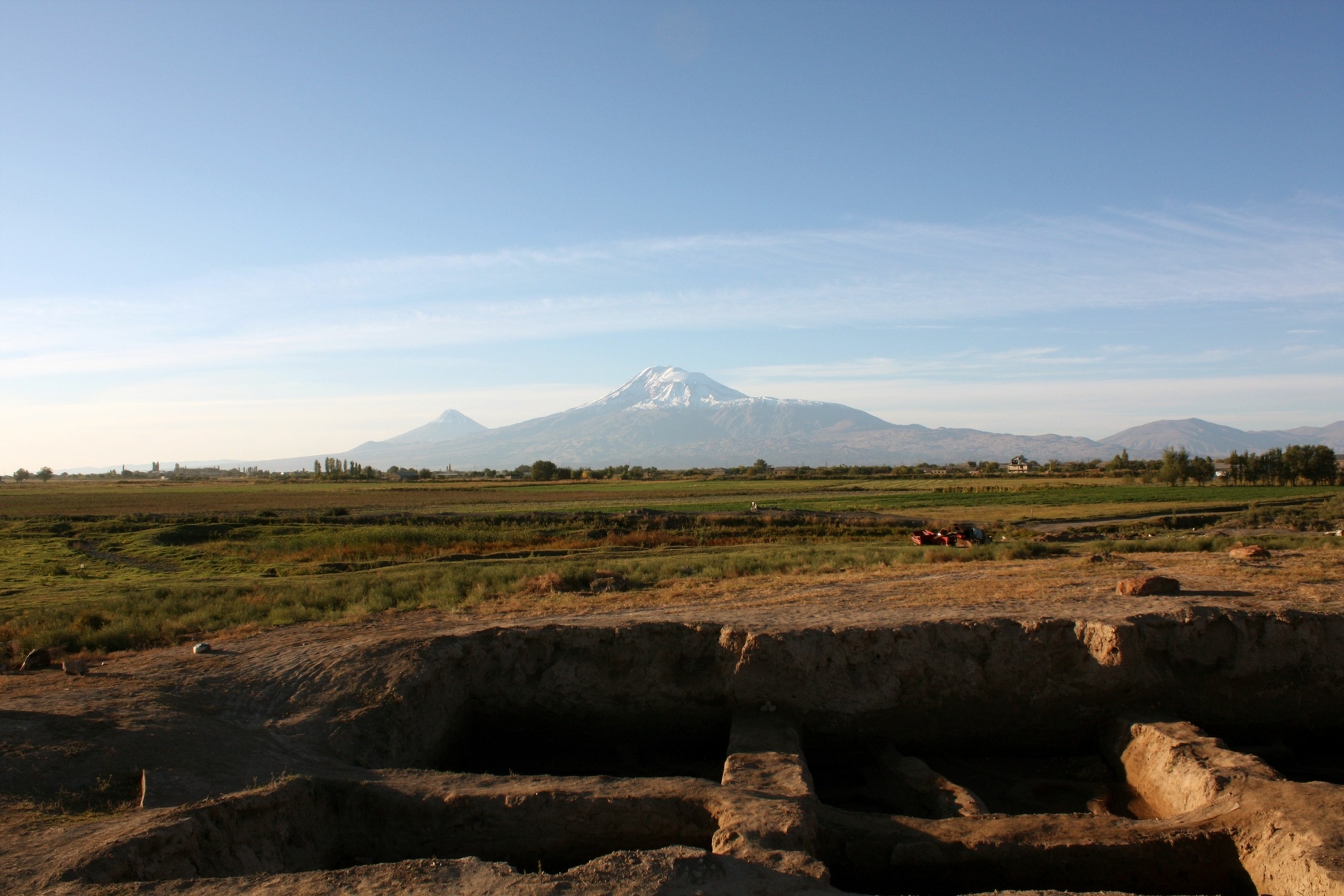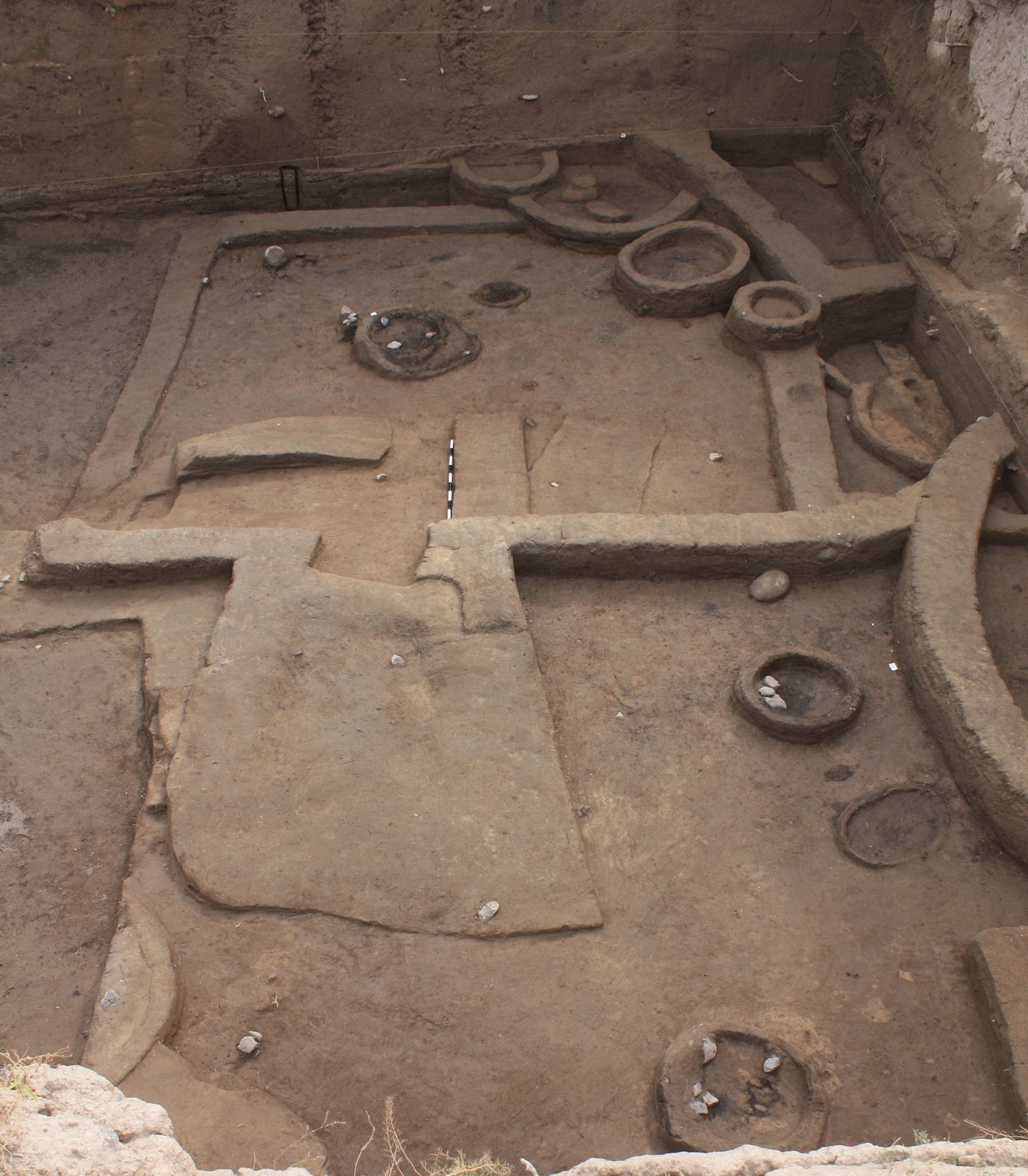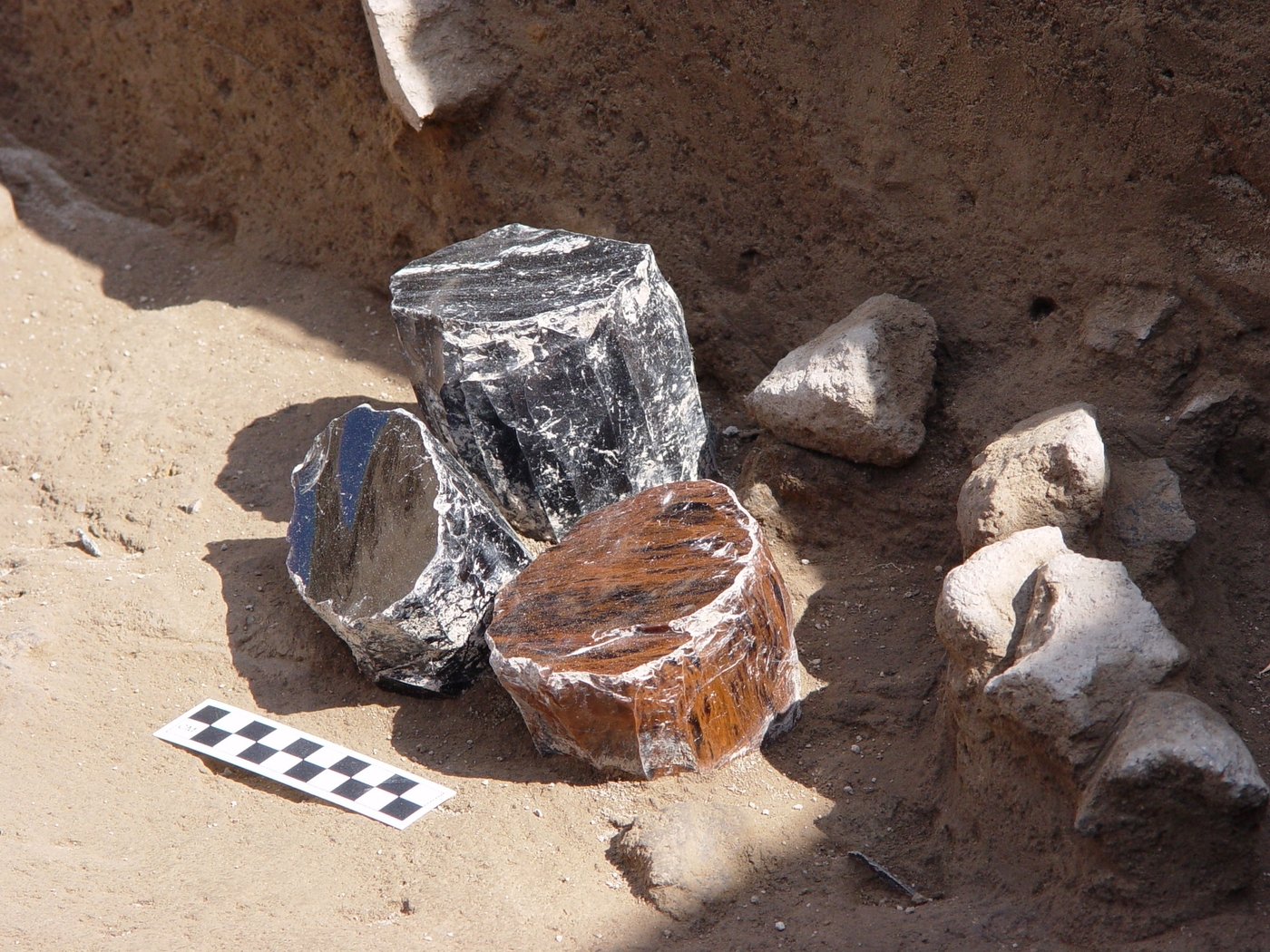Aknashen-Khaturnakh
Archaeological research into the Aknashen site suggests an extended occupation during the Neolithic period, from 6000 to 5400 BCE. The well-preserved remains provide a more detailed picture of the life practices of the first sedentary communities in the plain of Ararat.

In order to obtain the data necessary to observe the process of Neolithization on the Aknashen site, our mission has been supported, from the start (2004), by an international and multidisciplinary team of archaeologists, bioarchaeologists, geoarchaeologists and palaeoenvironmentalists.
The neolithic site of Aknashen
Aknashen is a small circular site, roughly 100 metres in diameter (0.8 hectares) in the southwest of Erevan, in the plain of Ararat (province of Armavir). It stands 3 metres above the level of the plain, although the earliest occupations (Horizons VII and VI) are below this level. Only four neolithic sites (Aratashen, Aknashen, Masis Blur and Tsaghkunk) have been identified in Armenia, all of them on the plain of Ararat. The rarity of Armenian sites, which differ in density to establishments dating from the Late Neolithic in the Valley of Kura (Georgia and Azerbaijan), is clearly the result of centuries of anthropization of the landscape in the plain of Ararat and the destruction of a large number of archaeological hills (Blur in Armenian). The Aknashen establishment is the best-conserved Late Neolithic site found in Armenia to date, and has been excavated by multidisciplinary teams for more than 15 years.
The Aratashen-Shulaveri-Shomutepe culture
The principal occupation (Horizons VII-II) of Aknashen dates from the Late Neolithic, and belongs to the Aratashen-Shulaveri-Shomutepe culture, which according to Carbon 14dating, extends from ca. 6000 to 5400/5300 BCE. Our research has revealed the village organisation of this occupation over a large area. Archaeologists excavated several circular habitats with an inner diameter of 4 to 5 metres that were built using the cob technique — the piling of raw earth mixed with straw. In situ , they revealed numerous constructions (combustion structures, often composed of cavities lined with stones, silos, and pits), traces of fire, and production activities attested by concentrations of a variety of artefacts. The remains of flora and fauna were systematically collected, allowing us to reconstruct the diet of these newly settled communities. They were expert at farming (mainly wheat and barley) and livestock breeding (with sheep and goats representing approximately 90% of the herd). Pottery, attested in the lower layers by several painted sherds imported from northern Mesopotamia, develops locally from Horizon V. The quantity and quality of the obsidian and bone industries are remarkable.
The early stages of Neolithization
In 2015, a cultural layer (Horizon VII) dated to between approximately 6000 and 5850 BCE was revealed for the first time in Armenia. Horizon VII provides an exceptional opportunity to gather original data on the initial stage of the Neolithization process, about which we still know very little.
The excavation of this deep layer has also revealed that the site had been settled ex-nihilo, on the dried sediment of a lake, and the virgin ground was composed of a layer of blue clay.
Learn more
- Mission website
- Rozalia Christidou. Les outils néolithiques en os d’Aknashen, ArchéOrient - Le Blog, 22 December 2017.
- Chataigner C. 2015. L’approvisionnement en obsidienne dans le Caucase : des questions et des hypothèses, ArchéOrient – Le Blog (Hypotheses.org), 27 March 2015.
Project supported by the French Ministry for Europe and Foreign Affairs on the advice of the Excavation Committee (Commission des fouilles).










